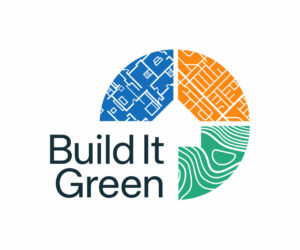BIG is collaborating with a growing network of local groups and our co-ops initiative members to advance and scale equitable housing cooperatives across California.
Securing resources to develop co-ops is a different process compared to other housing projects — so we asked west coast co-op professionals to share their experiences and answer questions during our recent learning session. While we work to normalize co-ops in California, sharing information and connecting our network with experts from other places is a vital part of BIG’s co-op initiative.
The answers below were condensed for brevity. Look for the lightbulb icon for key takeaways and additional information. View the full event recording here.
💡 “Due to the fact that cooperatives are so unfamiliar on the west coast, there aren’t really a lot of existing organizations to partner with, to supply some of these services, so we really had to do a lot of it ourselves,” says Andrew. SquareOne is developing and streamlining training and support to set cooperatives up for success.
💡 Consider churches in your local community as a potential resource. Several churches with excess land have reached out to SquareOne to build housing.

“You’re going to struggle to find people in the existing development project because it doesn’t make sense financially unless you’re mission driven,” says Andrew. “Most public policy related to housing is binary, either multifamily rental housing or single family home ownership. Cooperatives fall somewhere in between.”
SquareOne is working in the Oregon state legislature to allow Limited Equity Housing Cooperatives (LEHCs) to qualify for property tax exemption and state affordable housing tax credits. These are two things rental projects use to reach deeper affordability levels that currently aren’t accessible to cooperatives.
“It’s really hard because the policy is stacked against you,” says Andrew. “You have to become your own developer. We didn’t set out knowing that’s the role we would take, it happened because no one else was doing what we wanted to do.”
💡 Tamara says Frolic partners with local organizations and developers and brings the co-op expertise. Can co-ops in California replicate those relationships with local organizations?
At Frolic, homeowners get fair market value for their land. There is no bartering, and the organization will provide returns equivalent to other investors.
Frolic offered an example, where a homeowner has $450,000 in equity in her home.
💡 “A big objective of ours, in terms of the wealth building piece of it, is to ensure residents don’t have large unexpected expenses. By having the cash needed for large expenses, like replacing a roof or furnace, they can maintain their home’s value over time,” says Josh.
SquareOne is operating on a community land trust model, where they acquire land and act as a developer. They retain land ownership to maintain permanent affordability and provide ongoing support to co-ops. Their capital stack depends on the population they’re serving, where the projects serve households ranging from 50 to 80 percent area median income (AMI).
A resident’s up front cost to maintain membership of the co-op, called share purchase buy, depends on how many residents are a part of the co-op.
For example, SquareOne’s Peace Village Co-op included a $5000 share purchase, which served 30 to 50 percent AMI. Their C Street Co-op was a $20,000 share purchase, serving 60 to 80 percent AMI.
💡 Flexible lenders are helpful for residents.
💡 During this learning session, and in BIG’s recent blog post, Óscar from SOMOS Mayfair noted that finding a developer for their 20 to 30 unit project in San José has been difficult. It’s a small project, considering developers are used to 100 units.
💡 This learning session unveiled a key opportunity to advance co-ops in California by: enabling share loan purchases. If you have experience or ideas to advance this reality, email [email protected].
Frolic has implemented a robust operating and debt service reserve. “It’s the reality of life and so deeply important,” says Tamara.
For example, in Frolic’s first ten-home project, if every single person lost their job, the project would be able to pay all of the debt service and operating expenses up to four months and avoid eviction.
Frolic takes out a “lien” on the resident share, which allows the co-op to recoup the amount.
“We’ve been working towards, how do you create a system where it doesn’t require personal kindness between individuals, but you have a system setting it up and the hope that… it supports people in the realities of life,” says Tamara.
💡 Currently, Frolic has a set resident fee that doesn’t change depending on the size of the project. Frolic uses that fee to fund the debt service reserve.
Historically, co-ops that have been built at scale – nationally & internationally – usually have an umbrella organization that’s leading it, and that’s an important component, says Andrew.
Jeff offered an example in Eugene, Oregon – the East Blair Housing Co-op – a LEHC started in the late 70s which has site-level guidance.
Tamara added it’s essential to understand the nuances and economic story of a neighborhood, and help people have ownership of the land; all while “creating an ecosystem together, and being supported in good and hard economic times. There are a lot of special, creative things that can happen.”
SquareOne is interested in creating autonomous entities of different co-ops, and
how to take advantage of economies of scale to provide services to those co-ops.
SquareOne is pursuing LEHCs because they provide a path to homeownership without requiring individuals to qualify for loans. Instead, the co-op takes on loans.
The organization also has a revolving loan fund – a self-replenishing pool of money, using interest and principal payments on old loans to issue new ones – for share purchases.
One of SquareOne’s co-ops, the C Street project, financed the residents’ share purchases. “We have a security agreement that allows, if there’s a default on that share loan, SquareOne would be able to take back the occupancy rights associated with that membership,” says Jeff. “None of that required citizenship verification.”
Another advantage of a co-op, says Andrew, is that the blanket mortgage debt is held by the co-op corporation, not an individual member.
Thank you for reading the latest from our co-op learning session. Click here to view the full session recording. If you’re interested in joining BIG’s co-op initiative, please reach out to Jenny Low at [email protected].


Alex Coba
Communication Associate
As a proud California native from Stockton, Alex brings a wealth of experience and a versatile skill set. He has a solid communication background with a Bachelor of Arts in Journalism and Public Relations from California State University, Chico. Alex is adept at strategic communications and media relations, with experience gathering and sharing stories from his local communities that uplift the unique spirit and values of those places. He is excited to join Build It Green, where he can apply his talents to further BIG’s mission to help communities across California thrive